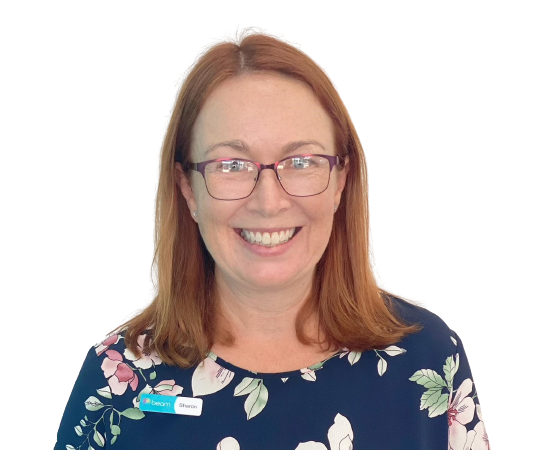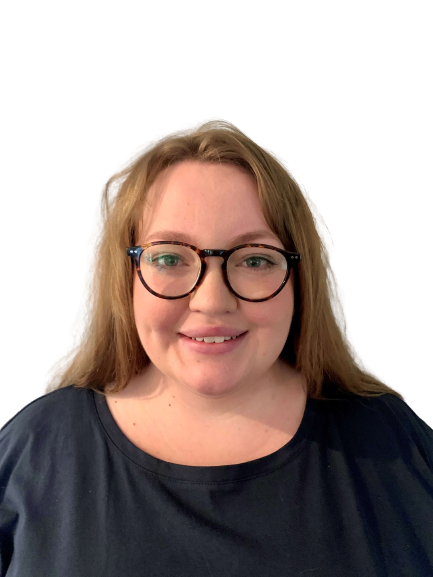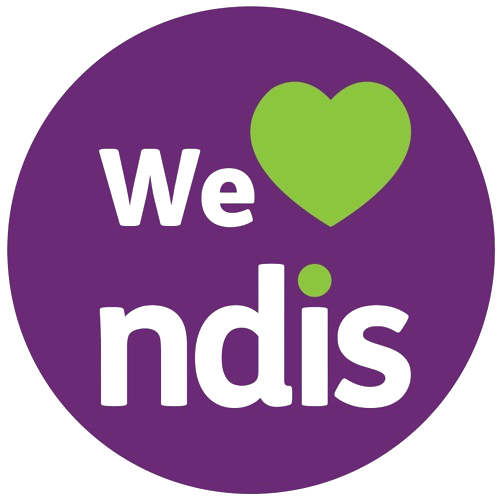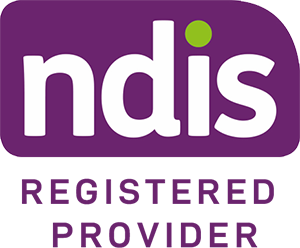To celebrate Speech Pathology Week 2022 ‘Good communication, better communities’, the Speech Pathology team at Beam explores the topics of: what communication is; how a communication disability can impact an individual’s everyday life; the ways in which the pandemic has affected how people communicate; and what we all can do to help others with a communication disability.
Communication disabilities are very common across Australia, with over 1.2 million Australians currently living with a communication disability. It is the role of a speech pathologist to support children and adults living with a communication disability to be able to communicate with confidence.
So… what is communication?
Communication is the process of exchanging ideas and interactions between two or more people. It is the method by which we exchange our thoughts, information, feelings, and desires. It is a basic human right, as everyone has the right to freedom and expression. Communication allows us to satisfy our need for belonging, to be heard and appreciated.
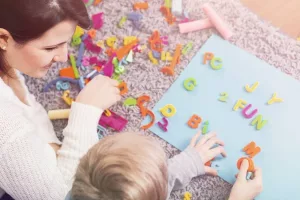
Communication is complex and made up of several components, which we start to develop from birth. These components include verbal communication (e.g., speech, language); non-verbal communication (e.g., prosody, intonation, facial expressions, body language etc.); written; and other forms of electronic communication. When we communicate, we often use more than one category at any given time. For example, someone could have a general verbal conversation with a group of close friends whilst using electronic communication, such as text messages, to communicate with work colleagues.
Our communication choices depend on many factors, one of which being our strengths and preferences for communication. We also consider the purpose, audience, and context and adjust our communication accordingly, sometimes without realising it. For example, when interacting with our friends, we may: chat; text using words, emoji’s and gif’s; use different vocabulary; include inside jokes and social references; use a loud voice and be casual. If however you were having a meeting with your employer, it would be professional, and you might interact via: email; phone call; use formal or work-related vocabulary; and speak at a lower volume, especially if you are in an office.
Whatever communication category or channel we use, creating a sense of understanding and shared meaning is the desired outcome or goal within the communication process. Individuals with a communication disability are likely to have difficulty being understood or understanding others. Think about how you may unconsciously communicate and take your communication skills for granted. Now think about if you didn’t have those skills and what it might feel like every day. A communication disability may impact an individual across various areas, including their ability to:
- Communicate and express ideas, needs and wants in a verbal, non-speaking manner, and/or in written or visual form.
- Be understood by others due to difficulty producing speech sounds, voice issues or stuttering.
- Understanding and processing information including spoken language, text and visual information.
- Interpret non-verbal cues such as intonation, facial expressions, and body language across different settings.
What are the impacts on a person who has a communication disability?
A communication disability can range from mild to severe and can impact an individual temporarily or last a lifetime. Effective and meaningful communication is an important tool for navigating numerous everyday situations and tasks. For example, as individuals line up for train tickets, they communicate with the ticket officer of their destination. When individuals go to the doctor, they communicate their signs and symptoms.
For individuals who have a communication disability, these everyday situations can be particularly problematic and stressful. Furthermore, research has shown that individuals with communication disabilities are more likely to require access to health intervention, public transport, and community support centers. Yet, they are the group most likely to have difficulty accessing these services. This could be due to the challenges they experience with initiating some form of communication, being understood by others, using written language and so forth. For example, starting a conversation with a health practitioner, clearly pronouncing words to communicate a message and reading/writing to complete a form all require different communication skills and can be challenging. For an individual with a communication disability, this is their everyday reality.
Some other points that you may not be aware of regarding people who have a communication disability and the impact on their everyda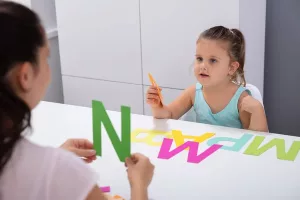 y life are:
y life are:
- People with a communication disability are less likely to have a non-school qualification (42%) than people without a communication disability (61%)
- Thirty-eight percent of people with communication disabilities are participating in the labour force compared with 80% of people without a communication disability.
- One in 7 people with a communication disability need formal assistance with communication.
- Half of all people who need formal assistance with communication have an unmet need for this assistance.
- Three in 5 people who have an unmet need for formal assistance with communication are children.
It is important for everyone to be aware of communication disabilities as they are often not obvious or visible to others. By understanding the impacts of communication disability and various communication strategies, we can all support individuals with communication
disabilities to have better access and participation, thus enabling them to have greater opportunities for effective and meaningful communication.
Impact of COVID 19 on communication
Covid-19 has impacted our lives in many ways. Our adjusted lives now regularly involve working-from-home, remote learning, masks, and isolation, which has influenced our communication methods and made it increasingly difficult for people with communication disabilities to engage in everyday activities. For example, mask wearing and virtual meetings, can impact one’s ability to effectively communicate, hear and understand a message and limits our opportunity to use additional cues such as the surrounding environment, gestures, facial expressions, lip reading and so forth, to gain further information.
To mitigate the impacts that COVID 19 has had on communities and help encourage individuals with communication disabilities to participate, there are things that all of us can do such as:
- Optimise the use of visual and auditory equipment in virtual meetings (e.g., using the chat feature, muting individuals that aren’t meant to be talking, using the ‘raise hand’ function).
- Use transparent face masks.
- Schedule teletherapy sessions when attendance at school and therapy sessions have been affected.
- Encourage small group settings and social gatherings to allow all individuals to speak and be heard, whilst still maintaining social distancing.
- Encourage the use of visuals to accompany text in signage, particularly as signs have become more prevalent in community-based centres, cafes and restaurants.
- With cafes and restaurants using plastic barriers to protect their workers at counters and registers, the use of augmentative and alternative communication (AAC) devices, such as a communication board or iPad, would be helpful for individuals when ordering food and drinks.
How can I help?
You may be thinking, ‘what can I do to help?’. When speaking to a person whom you may suspect has a communication disability, some helpful tips to consider for successful communication are:
- Always treat the person with a communication disability with dignity and respect.
- Be welcoming and friendly.
- Understand that there are many ways to communicate.
- Ask the person with the disability what will help with communication.
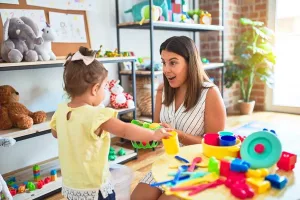
- Avoid loud locations; find a quiet place.
- Listen carefully.
- When you don’t understand, let them know you have difficulty understanding.
- If you think the person has not understood, repeat what you have said or say it in a different way.
- Try asking the person yes or no questions if you are having difficulty understanding them.
- Ask the person to repeat or try another approach if you don’t understand.
- To ensure you are understood, check with the person that you have understood them correctly.
- If you ask a question, wait for the person to reply.
- Allow the person time to respond, so always be patient.
- Speak directly to the person and make eye contact. Be mindful that some people may not want you to look at them (for example, some people with autism spectrum disorder).
- Speak normally. There is no need for you to raise your voice or slow your speech rate.
Speech Pathologists can help!
Speech pathologists play an important role in helping individuals with communication disabilities. They can help by advo
cating for the individual when they need help to communicate, encouraging them to access services that will help with everyday activities, and supporting them with managing their disability. Speech Pathologists have specialised skills in working with children and young people with communication disabilities or delays.
Get in touch
If you have any concerns or questions about therapy, get in touch with Beam for a chat about your child’s situation and how we may be able to help.
References:
(Source: Australian Bureau of Statistics, Profile of people with communication disability in Australia, www.abs.gov.au/)
(Source: Adapted from SCOPE, Communication for All Booklet, www.scopeaust.org.au)


